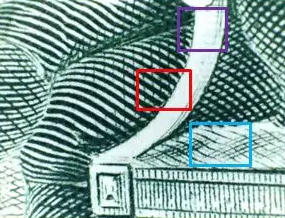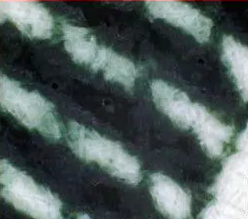What is Intaglio Printing?
Intaglio printing is a technique that has been cherished by artists for centuries. But before going into the characteristics and differences of intaglio prints, let’s understand what intaglio printing is.
Intaglio printing is a technique where an image is incised into a surface, usually a metal plate, and the incised line or area holds the ink. The plate is first covered with ink, which is then wiped clean, leaving ink only in the recessed lines. Paper is then pressed onto the plate with a high-pressure printing press, transferring the ink from the recesses to the paper. This process produces a print with fine detail and a rich, distinctive texture. Common intaglio techniques include etching, engraving, and mezzotint. This method has been historically significant in producing currency, fine art prints, and illustrations.
Now let’s talk about what distinguishes an intaglio print, which involves understanding its unique characteristics and knowing how it differs from other printmaking methods.
Key Characteristics of Intaglio Prints
Identifying an intaglio print requires familiarity with its specific features. These include the way ink is applied and transferred from the plate to the paper and the physical qualities of the print itself. Recognizing these features helps in distinguishing intaglio prints from those made using other methods like relief printing, lithography, or screen printing.
The key characteristics involve:
Incised Lines and Areas: Intaglio prints are created by incising lines or areas into a metal plate, typically copper. This process forms recessed areas that hold ink.
Ink in Recesses: Ink is applied across the entire plate surface and then wiped clean, leaving ink only in the incised areas. This results in characteristic rich, velvety lines and areas of color.
Printing Process: The plate, with ink in its recesses, is pressed onto dampened paper under high pressure. This forces the paper into the plate’s recesses, transferring the ink onto the paper Paper Characteristics: Intaglio prints often have a slightly raised impression around the inked areas due to the pressure exerted during printing. The paper may also show slight embossing around the image.
Differences from Other Printmaking Techniques
Relief Printing
In contrast to intaglio, relief prints have raised areas that are inked and printed, resulting in sharp lines and often visible textures from the wood or linoleum block.
Lithography
Lithographic prints use a smooth stone or metal plate with an ink-attracting substance and water-repelling areas. The ink sits on the surface rather than in recesses.
Screen Printing
This method uses a stencil or screen to apply ink onto the paper, resulting in clean-edged shapes and often vibrant colors, distinct from the tonal range of intaglio.
Identifying Intaglio Prints
To aid in identifying intaglio prints, it is useful to have a clear understanding of their distinguishing traits and how these traits manifest in the final print. This guide provides the necessary information to confidently identify and appreciate the intricacies of intaglio prints, enhancing one’s ability to recognize and understand this art form.
Look for Depth and Texture: Intaglio prints often exhibit a depth of color and texture that is not easily replicated in other printmaking techniques.
Check for Plate Marks: Look for indentations or marks on the paper’s edges, indicating it was pressed against the plate during printing.
Inspect the Paper: Intaglio prints are typically made on thicker, high-quality paper that can withstand the printing process and show embossing around the image.


By understanding these key points and characteristics, you can confidently identify and appreciate the intricate beauty of intaglio prints in art collections and exhibitions.
Intaglio printing is a revered technique that has played a crucial role in the history of art and printmaking. Its ability to produce fine detail, rich textures, and nuanced tones has made it a favorite among artists for centuries. By understanding the unique characteristics of intaglio prints, such as the incised lines, the application and retention of ink in recesses, and the high-pressure printing process, one can distinguish these works from other printmaking methods like relief printing, lithography, and screen printing.